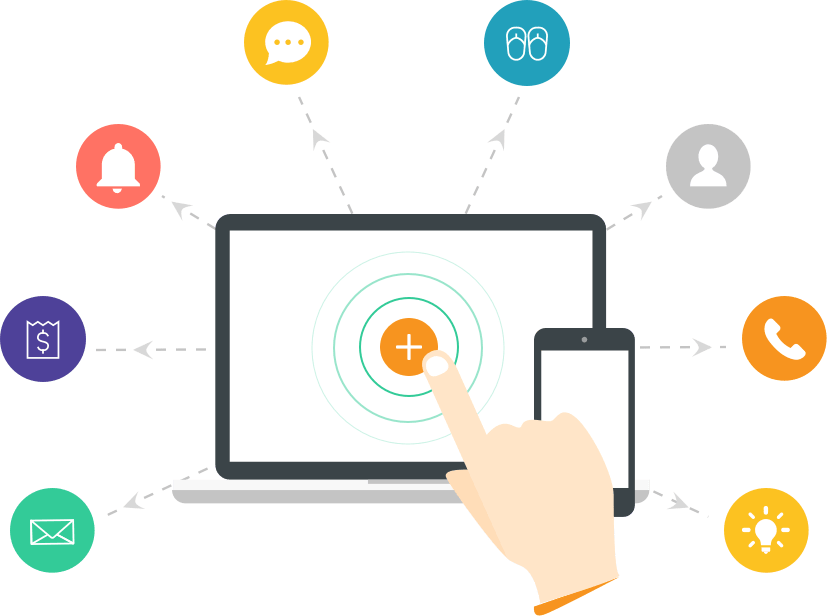
Employee data management is the organizational way of ensuring employee data is safe and easy to handle.
A well-maintained employee database saves time, enables people analytics, and enhances HR efficiency. It provides clear visibility and full control over employee information at all times, ensuring compliance and accuracy.
This article explores the best practices for employee data management. We will help you improve operational efficiency, empowers informed decision-making, and strengthens overall HR practices.
Related articles:
What is Data Management? Your Guide to Excel in the Future of HR
Digital Leadership in HR: Transform your Management System
What is Employee Data Management?
Employee data management is the process of collecting, storing, organizing, and securely handling information related to a company’s workforce. It ensures that HR teams can access accurate, up-to-date information when needed to make informed decisions about people management, compliance, and business operations.
At its core, employee data management forms the backbone of modern Human Resources (HR) operations and analytics.
What is HR Data?
Wondering which data types are typically found in the human resources department? HR data includes any information that relates to the people within an organization. This data can be both personal and professional, and it typically falls into the following categories:
- Personal identifiers: Name, date of birth, contact details, Social Security number (or equivalent).
- Employment information: Job title, department, manager, start date, contract type, salary, and compensation details.
- Performance data: Appraisal results, goals, productivity metrics, training and development records.
- Attendance and timekeeping: Work hours, absences, vacation, sick leave.
- Compliance and legal: Work eligibility documents, certifications, background checks, and policy acknowledgments.
- Benefits and payroll: Insurance selections, retirement plans, bonus records, and payroll processing data.
- Engagement and wellbeing: Survey results, feedback, mental health resources accessed, etc.
The 5 C’s of Employee Data Management
1. Consistency
HR data must be consistent across all systems and departments. When employee information such as job titles, salary details, or performance ratings is entered differently across platforms, it leads to confusion and poor decision-making. A centralized HR platform ensures uniform data formatting and synchronization, so everyone works from the same reliable source.
2. Correctness
Accurate data is critical in HR. Incorrect information can result in payroll errors, compliance violations, or misinformed performance evaluations. Through validation rules, automated updates, and controlled user access, HR platforms help maintain data correctness, minimizing human error.
3. Completeness
Incomplete records like missing tax documents, training certifications, or emergency contacts can disrupt operations and pose legal risks. HR data management tools prompt users to fill required fields and flag missing data, ensuring that no critical employee information is left out.
4. Currency
HR data must be up-to-date to remain useful. Whether it’s a change in job role, compensation, or contact information, outdated records compromise operational decisions. With real-time updates and employee self-service options, modern HR systems keep data fresh and actionable.
5. Compliance
From GDPR to local labor laws, HR departments must adhere to strict regulatory standards. HR data management systems offer built-in compliance features like access controls, audit trails, and data retention policies to help companies meet legal obligations. All while protecting sensitive employee information.
Key Steps and Best Practices for Managing HR Data Effectively
Managing HR data isn’t just about collecting information—it’s about ensuring that the data remains accurate, secure, accessible, and useful for making strategic decisions. Whether you’re just starting out or refining your current system, here are the core methods and practical steps to manage HR data effectively.
Centralize your Employee Data with an HR System
Effectively managing HR data starts with choosing the right tools. In fact, HR management systems (HRMS) remain a top target for technology investment and replacement, with 41% of organizations planning to increase HR tech spending in 2025.
The foundation is to centralize all employee information using a reliable HR system like an HRIS or unified platform. This reduces data silos and ensures that everyone is working from a single, accurate source of truth.
When employee data is spread across multiple systems, data inconsistencies and duplications are inevitable. Centralizing all HR data into one unified platform ensures that everyone works with the most accurate and up-to-date information. For instance, without centralized data, an employee’s address change may be updated in the payroll system but not in the benefits portal, leading to communication issues and delayed benefits processing.
Once your system is in place, it’s important to standardize how data is entered. Use clear data input rules and templates to keep things consistent. For example:
- Use the same naming conventions across departments.
- Define acceptable formats for dates, phone numbers, and job titles.
This reduces confusion and makes reporting easier later on.
Maintain Data Accuracy and Security
Outdated employee data can lead to payroll errors, compliance issues, and communication gaps. According to SHRM, 60% of HR professionals identified data accuracy as a significant challenge in data management.
To maintain high-quality data, you should also focus on accuracy and completeness. Set validation rules within your system to flag incomplete or mismatched information, and run regular audits (monthly or quarterly) to clean up any issues that arise.
Don’t forget about legal compliance. Stay updated on data privacy regulations such as GDPR, CCPA, and local labor laws. Automate data retention and deletion rules to avoid keeping outdated or unnecessary records. Implement strict access controls, encrypt sensitive information, and ensure regular data audits. You can also add encryption protocols to further secure personally identifiable information (PII), such as salaries and addresses.
To guide everything, put a data governance policy in place. This should include:
- Who owns the data?
- How often it should be updated?
- When and how it should be deleted? Training your HR team on these policies helps maintain consistency and compliance across the board.
Use Automation to Eliminate Data Errors
Manual data entry is prone to mistakes, inefficiencies, and compliance risks. By automating processes and data updates using HR workflows, you can ensure data accuracy and reduce administrative burdens.
For example, instead of manually inputting employee information during onboarding, HR teams can use automated forms that populate data across payroll, benefits, and performance management systems simultaneously. Tools like electronic signature platforms can streamline contract approvals, while automated reminders for compliance training ensure employees stay up to date without HR constantly chasing deadlines.
Additionally, integrating Learning Management Systems (LMS) with your HR platform through LMS integration services allows for seamless tracking of employee training progress. You can automatically update records as courses are completed which eliminates the need for manual data entry and reducing compliance risks.
Enable Employee Self-Service
Another smart move is to empower employees with self-service options. Let them update their personal information, access documents, or request leave through a secure portal. This not only keeps data more accurate, but also reduces the administrative burden on HR.
With a unified data platform, changes made by an employee in one place automatically reflect across all integrated systems, reducing such errors.
Train Employees on Data Management
Effective employee data management starts with your team. Training employees on proper data handling practices ensures information is accurate, secure, and up to date.
Equip them with clear guidelines on data entry, privacy protocols, and compliance requirements. Using employee training templates can support a more systematic approach to training, helping ensure nothing important is overlooked. Invest in your team’s knowledge because well-trained employees are the key to reliable and secure data management.
Leverage Employee Data for Analytics
Once your HR data is clean and well-managed, don’t let it sit unused. Leverage it for insights. Use dashboards and HR analytics tools to track metrics like turnover rates, time-to-hire, or absenteeism trends. These insights can inform better workforce planning and decision-making.
For example, by analyzing turnover trends across departments, you can identify hotspots of disengagement and take action before they impact performance. HR analytics can also uncover patterns in recruitment, such as which hiring channels bring in the most high-performing employees, helping you optimize your talent acquisition strategy.
4 Key Benefits of Employee Data Management
1. Quick access to information on a unified employee profile
A robust employee data management system provides a unified profile that stores all essential employee data in one place. While different organizations prioritize varying data points, common details include date of birth, job title, supervisor’s name, and department.
With unified employee data management, all branches, departments, and employees operate on a single, integrated platform. This streamlines processes, enhances data security, and improves efficiency. Employees benefit from self-service capabilities, saving time and improving overall talent management.
2. More accurate and reliable HR data
For years, HR leaders have relied on manual employee data management, often with little to no data governance. Offices were filled with paper documents, making it easy for information to be misplaced or recorded inaccurately. Retrieving and managing data was tedious and time-consuming.
Today, modern HR systems have changed the way HR operates, providing more accurate and reliable data management. For example, recording employee working hours through a system eliminates errors common in manual tracking and reduces the need for constant updates through automation.
By adopting modern tools, HR departments can enhance data integrity, improve efficiency, and free up valuable time for more strategic tasks. HR Director of Provalliance Group, Jenna Pignerol, stated that “the data is obviously not an end goal, but it is a way to bring performance, quality, and serenity to teams. Until recently, most of our tools were managed by fax and email, and a little with Excel files, so you can imagine the limitations.”
3. Better visibility of your workforce
For HR managers, effective data management is essential to gaining complete visibility into the workforce. Real-time access to accurate employee data boosts transparency, enabling managers to monitor productivity, track attendance, and manage performance seamlessly.
This clarity allows for tighter control over labor costs, early identification of workforce trends, and more strategic workforce planning. With insights into employee skills, availability, and development needs, HR can close skill gaps, optimize resource allocation, and boost operational efficiency.
In multi-location organizations or those with independent departments, a centralized HR system unifies employee data into a single, accessible platform. This consolidation simplifies data management, ensures consistency, and enhances decision-making through robust analytics and reporting. HR teams can quickly generate reports on headcount, turnover, and compliance, enabling faster, data-driven decisions.
4. Accelerate new hire integration
Effective employee data management streamlines the onboarding process, allowing new hires to integrate faster and more smoothly. With immediate access to essential information—such as team structures, company policies, and key contacts—new employees can quickly find their footing and become productive sooner.
Self-service portals further empower them to manage personal details, complete onboarding tasks, and connect with colleagues, fostering a sense of belonging from day one. This accelerated integration improves engagement, reduces ramp-up time, and enhances overall employee satisfaction.
Why is a Centralized HR Platform is Essential for Employee Data Management?
A modern HR platform is more than just a digital filing cabinet. It’s a powerful tool that streamlines how you collect, organize, and use employee data. By consolidating HR functions into a single, user-friendly system, it eliminates the chaos of spreadsheets, scattered tools, and manual processes.
Most companies today choose HR data management platforms for their flexibility, real-time updates, and ease of access. Whether you’re managing a growing workforce or navigating complex compliance requirements, a centralized HR system ensures you always have accurate, up-to-date information at your fingertips.
At its core, an HR platform acts as a secure hub for all employee records. It safeguards sensitive data like tax information and identification numbers, monitors changes automatically, and helps your team stay compliant with evolving regulations. In the event of fraud or data loss, built-in security measures and backup capabilities protect your business and ensure quick recovery.
This kind of system transforms how HR operates by supporting every key function, from recruitment and onboarding to performance management and payroll, with real-time, integrated data. It removes data silos, boosts consistency, and speeds up decision-making. This leads to:
- More strategic, data-driven HR practices
- Greater operational efficiency
- Improved employee experiences
Simplify Employee Data Management with PeopleSpheres
Managing employee data shouldn’t be a hassle. PeopleSpheres makes it effortless by unifying all your HR data into one powerful, intuitive HR data management platform. Say goodbye to juggling disconnected tools or chasing outdated records. With a centralized system, you gain a single source of truth, boosting accuracy, eliminating duplication, and saving hours of manual work.

The PeopleSpheres platform connects seamlessly with your existing HR software, so you can manage everything from hiring to performance tracking in one streamlined experience. Update employee details once, and the change is reflected everywhere automatically.
No silos. No data re-entry. Just seamless efficiency.
Thanks to our modular architecture, you can choose, swap, or scale your HR tools without starting from scratch. Whether your priority is reducing churn, automating payroll, or delivering a better employee experience, PeopleSpheres gives you the freedom to build the HR ecosystem that fits your business.
Stop wrestling with fragmented systems. Empower your HR team to focus on what matters most: your people. How? Simplify and automate your employee data management with PeopleSpheres.

-360x360.jpg)


-640x380.jpg)